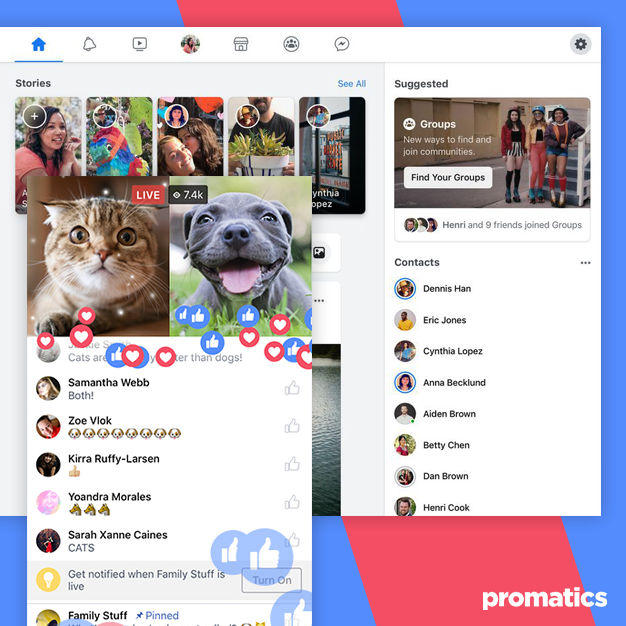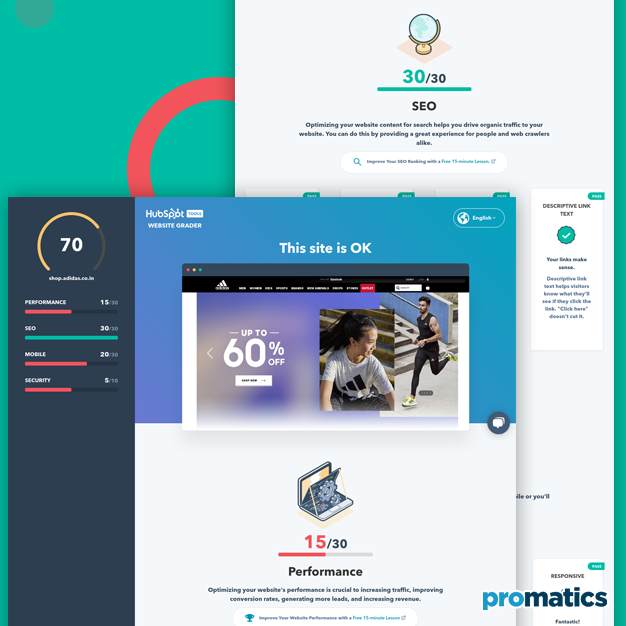6 out of the box growth strategies used by Facebook, Twitter, Snapchat, Tinder and more
User growth is what every business aims for, be it a small shop around the corner or a billion-dollar tech company. The ultimate goal for any business is to earn profits and it is not possible to achieve the targets on that without selling the product at an appropriate scale. And for this, you need to formulate your growth strategy but…
What do you mean by a growth strategy?
A growth strategy simply means a plan that can help you increase your desired outcomes and ultimately growing as a company.
There are practically unlimited ways to develop a growth strategy but all of them founded on 4 main ideas:
a.) Developing new products that excite the audience you aim at engaging
b.) Improving the engagement of the existing users by modifying your offerings
c.) Making too-good-to-be-true offers that address concerns that a potential user may have in his mind
d.) Targeting previously untapped types of audiences for a more inclusive user base
While these may layout the general rules of user growth, innovation is always welcome. Over the years, companies have tried and tested novel ways of improving their userbase and ultimately, make mind-blowing growth in a remarkably less time period.
While their strategies might not be made for your business, you can always take the primary idea and tailor it to fit into your business.
Let’s look into the strategies that companies opted to become the brand as we know them today as well as some insight about what they are trying to do for the days ahead.
1. Facebook
With the largest number of users in the world, Facebook today provides the best platform for marketing but what did it take Facebook to reach where it is today?
Facebook has been very keen on the data that it has about its users. Everything from their place of birth to where they are and what do they like and dislike is on people’s profiles and Facebook makes the best use of this data not only to increase the user side but also drive growth amongst the advertisers.
The key metric for Facebook has been if the new user was able to connect with 7 people in 10 days of signup or not. When you are on a social media platform, you should have someone to socialize with. If the platform can’t help you do that, you are not going to use it.
This was Facebook until it had 4 billion users. When you have these many users, there is hardly room for growth in the user count. Facebook knows this and this is the reason it has shifted its focus in retaining the user and keeping him hooked up on the platform by increasing the way he/she gets out of the app.
a.) Facebook has been slightly biased towards video content that keeps the viewers’ attention for longer.
b.) Facebook is trying to become the ‘all problems, one solution’ platform that helps you to socialize and connect with friends and family but also buy products online. Businesses can now make proper catalogs of their products for you to choose from.
On the contrary, if we look at Facebook as a marketing platform for businesses, anyone who has tried to create an ad on Facebook will know the choices it offers. A marketer looking to set up an ad doesn’t care if you have 4 billion users. All he cares about is if Facebook has the 4,000 that he can sell his product to.
During the ad setup process, Facebook showcases its reliability and potential to help you achieve the goal that you find nearly impossible to reject. So, display the potential that your product has and appropriately address their needs for the best growth.
2. Snapchat
Snapchat was born at a time when we already had enough social media platforms for the day. Tapping on an already saturated market was a tough job but with the right set of tools and clean implementation of innovation, you can still make your mark.
People realized that social media is addictive and they waste too much of their valuable time on them. Snapchat shows up with a solution. You need to share your life with your friends in a short and fast way, click one picture a day, and send them. They’ll know what you are doing in just a few seconds.
Sounds promising except that you are actually telling the users to be less on your platform. This is the smartest part. Sending and receiving a snap daily from a friend makes a streak and has developed a scale of how strong their friendship is.
You do not want your friends to get mad at you, keep checking if the both of you have sent snaps. End result is people checking you every now and then for short intervals if they have sent their snap of the day.
3. Hubspot
Hubspot has successfully made one of the best implementations of the freemium model that offers limited but free access to your product. In the free part, you prove that your product is a good candidate to bet on and cover up your costs once they make a purchase.
Hubspot’s CEO created a Website Grading website that analyzes different aspects of your website and lets you know the areas you need to improve. It tests the site for SEO optimization, loading time, and multiple other metrics that impact an actual user’s interaction and it is absolutely free.
This seems like a web developer’s dream come true but here’s the asterisk. You will need to signup to get the results. Once you signup, Hubspot has found itself just the perfect lead to market their products too.
Additionally, they have analyzed your website and they know the exact things you need to work on and just the perfect set of products in their range to suit your needs.
Now that is one smart move. Keep it up Hubspot.
4. Tinder
In-person marketing is not the trend these days because literally every person can be accessed through a social media website. But this was not the way how Tinder took off.
Tinder’s very first marketing campaign included going to a college and making boys and girls install their app. The thing they were sure of was about their target audience. The millennials, the perfect audience for Tinder, are the age group who are looking for a company beyond friendship and Tinder brought the opportunity to their doorstep. So they had a very high ROI on their marketing campaign.
First, they got a group of girls to signup and subsequently, men and it continued until they had enough audience for the app to take off on its own.
If we think about Tinder on its day of launch, it was just an empty stadium with no people or teams. There was none to even have the possibility to match. With its marketing campaign, it brought youngsters on the platform who had one thing in common, they were college mates. We all know about college enthusiasms and the rest is history.
Who knew the most popular online dating company took off by touring colleges?
5. Zapier
Visit any SaaS website and you will find out that it has an integration with Zapier which allows you to connect even more apps. In the end, you have your custom-built set of integrated software that works as seamlessly as it could get.
The journey to the point of ‘every software service craves to integrate you’ was not easy, especially at the start. Wade Foster shared the early days of Zapier and how they built it from scratch in an interview when he explained how they got their product from the garage-startup to the actual market.
They started off small by targeting users of apps they were promising to integrate. Say, they offered to integrate Mailchimp with Wufoo. Wade himself would go to Mailchimp and Wufoo’s forums and post replies like ‘here’s how you can do it or ‘I can get it done for you, just click on the link to get in touch.
Wade as a marketer had the precise idea about the audience he needs to reach out to and providing just the thing they needed ended them up with even selling their Beta for $100 in the start. That’s a lot to ask for a beta Zapier when we think of it today but they took off.
Wade added one more very important component to the concoction. In his interview, Wade shared that there are three types of businesses, one that sells cheap products, another that provides the best quality. Both of these things are only possible if you are Apple or Xiaomi. You need economies of scale and years of experience. Neither of these two things you have as a startup.
The third type of company though, is the perfect thing that you can achieve, excellent customer service. If you want a customer to bear the bugs in your paid Beta with you, the very least he deserves is your attention and you telling him ‘don’t worry, I am on it.’
Turned out, Zapier’s success all revolved around good customer service and a lock-and-key solution that someone needs.
6. Twitter
Till now, one thing that is very evident is user retention. If you can stop your customer from getting bored and leaving your platform or getting annoyed and leaving your platform, you are the growth-strategy king.
The same goes for Twitter who realized that if a new person signs up and gets to bear with an empty screen, there is no reason for him to keep staring at it. That’s when they started to ask people about their interests during the signup process and then showing accounts, they would most likely be interested in.
For example, a girl interested in makeup gets to follow Maybelline or NYC during the signup and as she spends 20 min to half an hour, more suggestions show up and the feed is filled in no time.
User retained; mission successful.
Recent updates are that Twitter is thinking about taking retention to the next level. The concept is similar to an ‘Onlyfans’ setup in which the user will pay for exclusive content from certain accounts. Let’s see how Twitter pulls this off this time.
In the nutshell…
User growth can arise from any gamic that you can successfully pull off. At times, minor things such as account suggestions are useful and on others, forums of Mailchimp and Wufoo.
Put some thought into your audience’s approach, be compassionate. Walk-in their shoes for long enough to realize their pain points and offer excellent customer service when they turn up with a problem.
That’s not what we recommend (not that we do not recommend all of the above), that is what billion-dollar giants have learned and implemented on their way.
Still have your concerns?
Your concerns are legit, and we know how to deal with them. Hook us up for a discussion, no strings attached, and we will show how we can add value to your operations!


